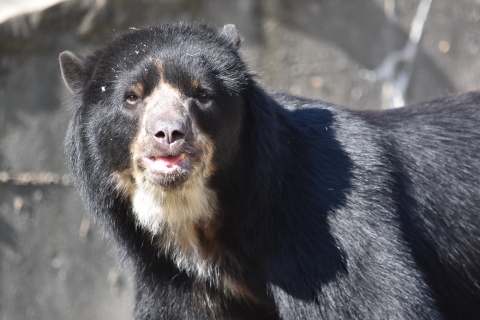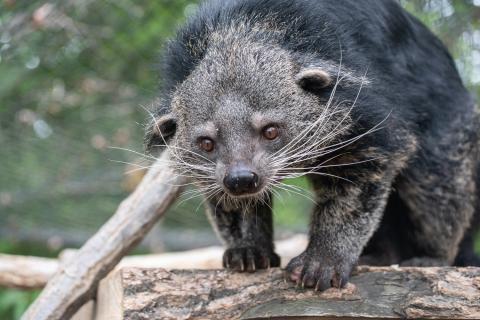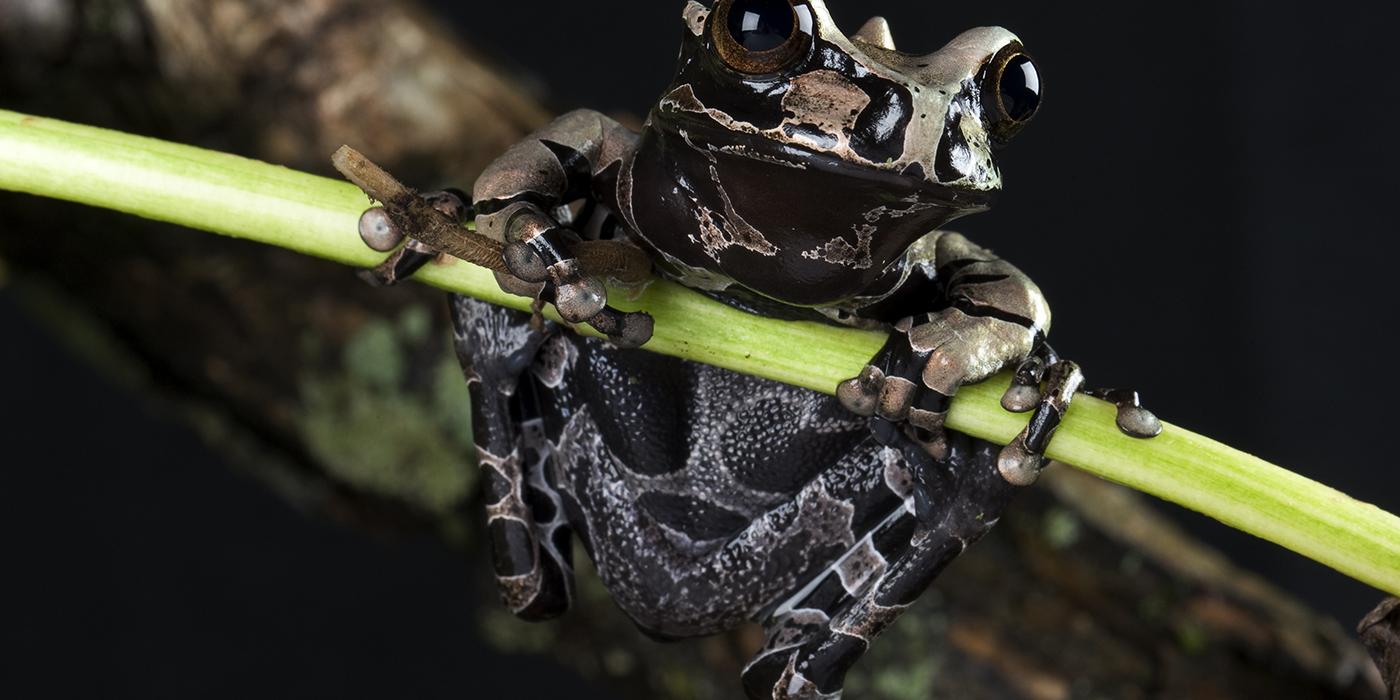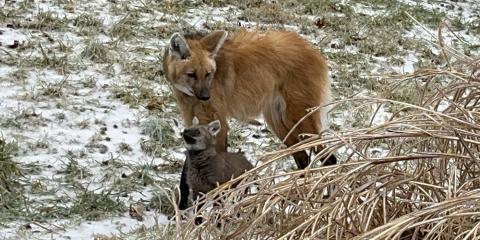Physical Description
The coronated tree frog is light brown in color with darker brown markings, a black belly and flanks bordered in white. They have sharp pointed projections on their heads and a huge tympanum (round, smooth disc at the corners of their mouths that works much like a human ear drum). Juveniles lack projections and are white when hatching, transitioning from dark brown to bluish-gray as they mature.
Size
Sizes range from 2.5 inches (68 millimeters) in males to 3 inches (80 millimeters) in females.
Native Habitat
The coronated tree frog's range includes fragmented populations in Costa Rica, Honduras, Panama and Mexico. It is also found as fragmented populations on the Atlantic slopes of the Sierra de Los Tuxtlas, Veracruz State and northern Oaxaca State in Mexico, eastern Honduras, central Costa Rica, and central Panama from 311 to 6,561 feet (95 to 2,000 meters) above sea level. It has not been recorded in Belize, Guatemala, El Salvador or Nicaragua.
An arboreal species, coronated tree frogs are rarely seen as they spend their lives in bromeliads and other plants. They are found in in subtropical forests just below mountainous regions. They live in intact forests, but are also common in young, secondary growth forests. They are also sometimes observed to be living in coffee plantations.
Lifespan
It takes between 60 and 136 days for full metamorphosis, depending on the number of surviving tadpoles and the competition for food. Tadpoles feed on eggs, and those that succeed in consuming more eggs develop more quickly. It is thought that the life span of these frogs is 10 to 15 years.
Communication
This species lacks vocal slits and sacs, but their loud "boop-boop-boop" call can be heard up to 300 feet (100 meters) away.
Food/Eating Habits
As adults, coronated frogs eat insects and other small arthropods. As tadpoles, they eat unfertilized eggs deposited by their mothers.
At the Smithsonian's National Zoo, they are fed crickets, mealworms and earthworms.
Sleep Habits
Coronated tree frogs are a nocturnal species, which means they are active at night.
Reproduction and Development
Males attract females by calling from suitable egg-laying locations where water has collected, such as tree holes, bamboo internodes or bromeliads. In human care, where most reproductive behavior has been observed, females will approach a calling male and be clasped by him immediately after entering the water. The pair will then dive under the water. The female lays between 50 and 300 eggs, attaching them to the plant just above the surface of the water where the male fertilizes them. The eggs are left unguarded. Only one to 25 eggs will actually hatch, which happens within six or seven days of being laid.
After the eggs hatch, the female returns regularly to lay additional unfertilized eggs as food. She sits on the water with her cloaca submerged, and is apparently stimulated to lay eggs by the tadpoles touching or sucking her. Within one clutch, tadpoles that are more successful in the competition for eggs will grow more quickly. Others will remain small until the larger tadpoles have metamorphosed and they are able to obtain enough food. If for some reason a second fertilized clutch is deposited, larvae that hatch are generally eaten by the first clutch.
Conservation Efforts
While they have a wide range, it is extremely fragmented and threatened by human development. Recent publications have shown population declines in this species is likely due to the spread of amphibian chytrid fungus, discovered at the Zoo in 1999.
Help this Species
- Reduce, reuse and recycle — in that order! Cut back on single-use goods, and find creative ways to reuse products at the end of their life cycle. Choose recycling over trash when possible.
- Be a smart consumer. Choose products made with sustainable ingredients, such as Smithsonian certified Bird Friendly coffees, which support farmers striving to limit their impact on wildlife and habitat.
- Support organizations like the Smithsonian’s National Zoo and Conservation Biology Institute that research better ways to protect and care for this animal and other endangered species. Consider donating your time, money or goods.
Animal News

How Are Animal Matches Made at the Zoo?



